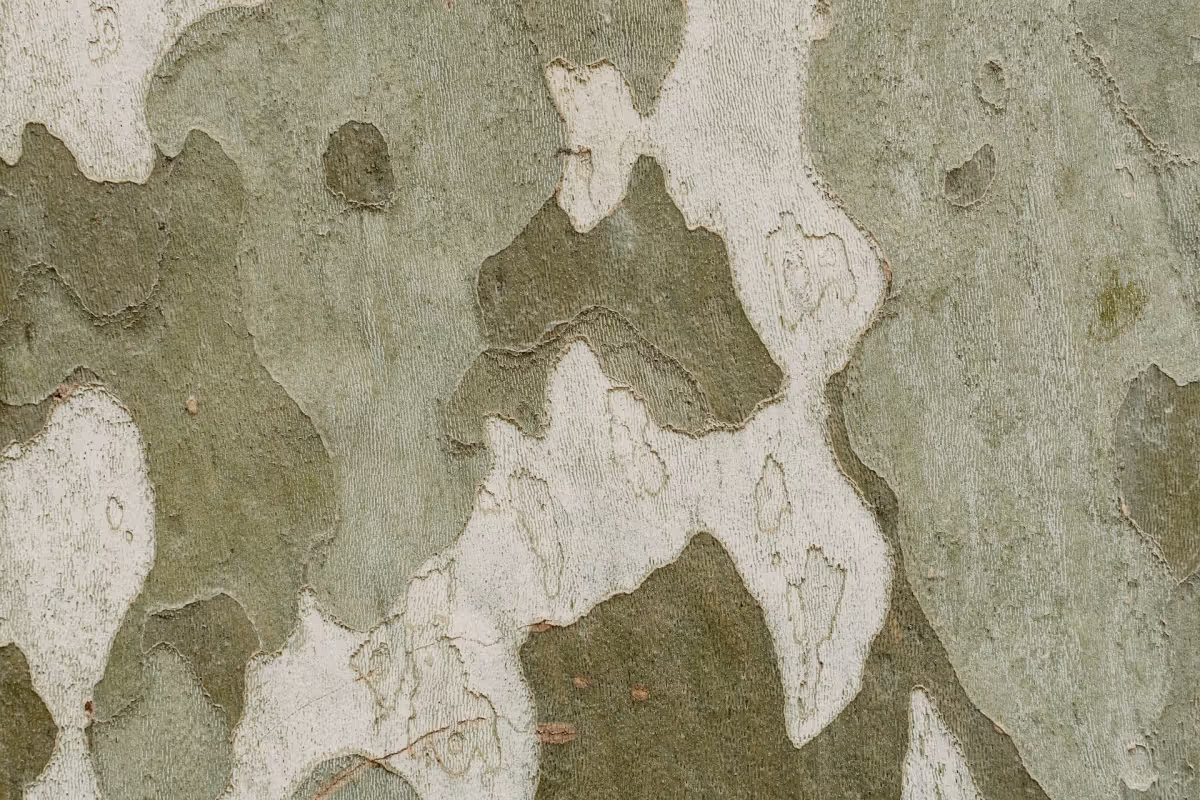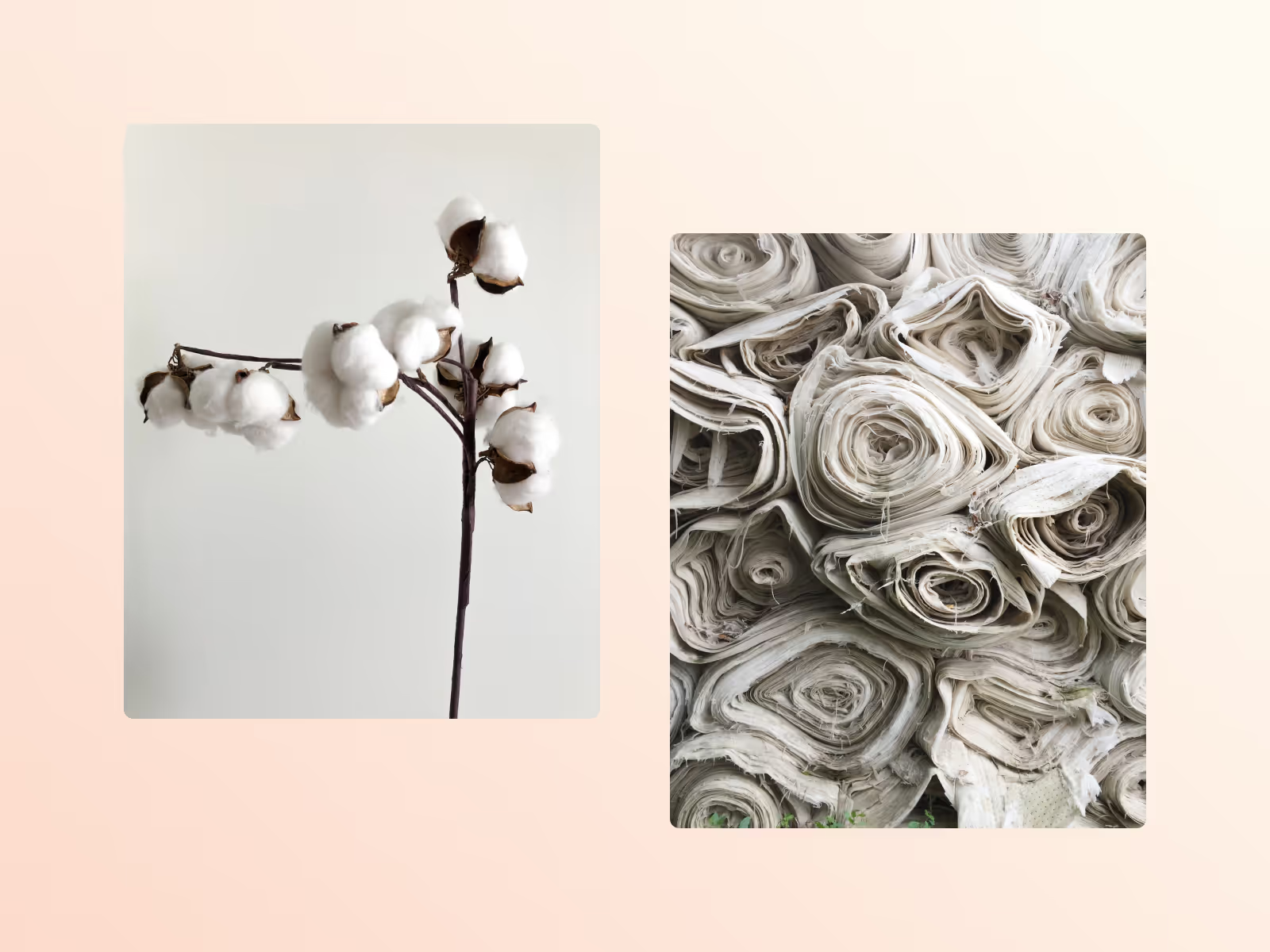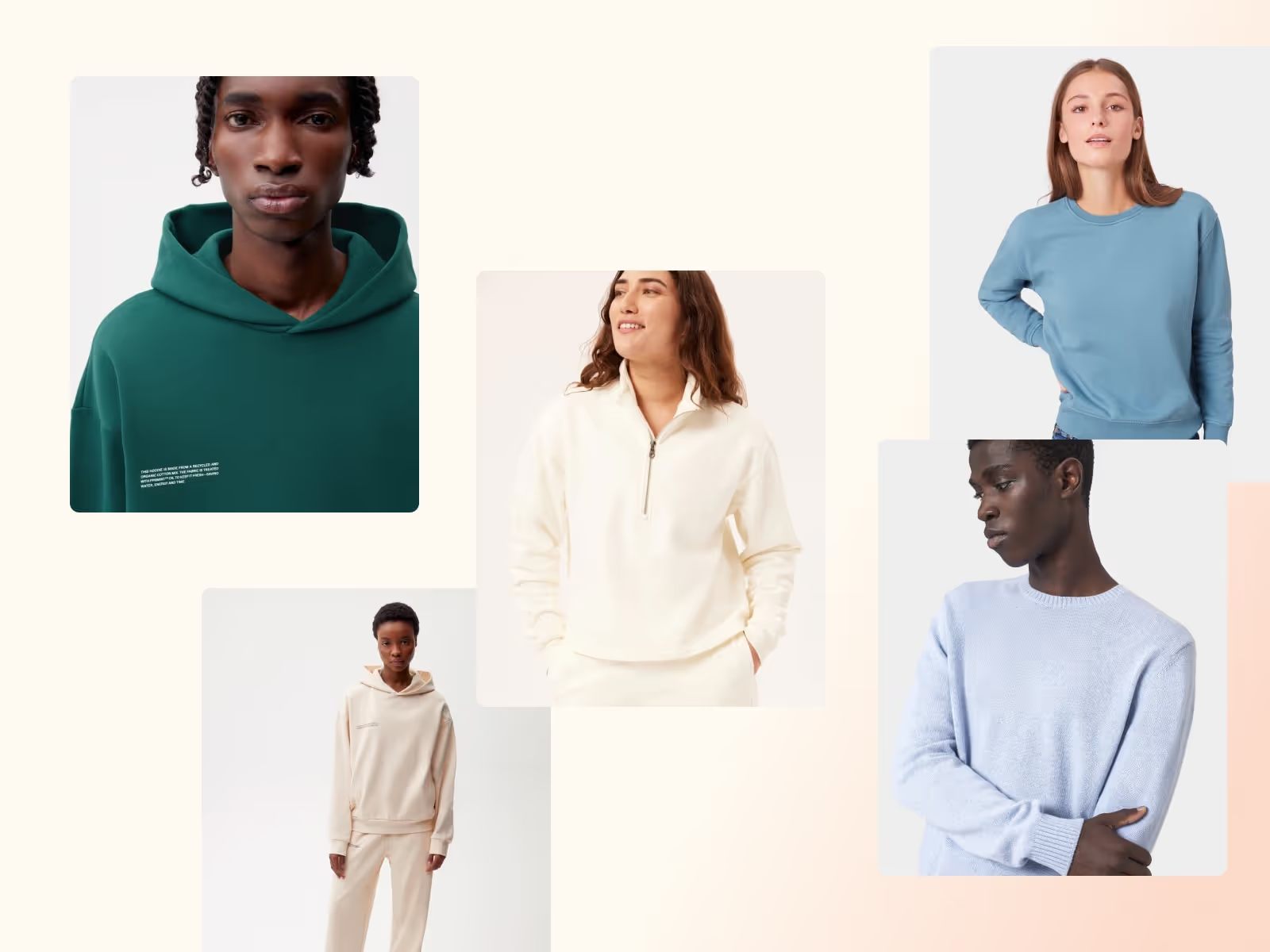What is Tencel and where does it come from?
The word Tencel is actually a brand name. It’s the flagship product of Lenzing Group, an Austrian fabric company. Tencel is made from either lyocell or modal fibres. Usually from lyocell. It was first produced back in 1972.
Lyocell and modal are semi-synthetic, cellulose fibres. They are made from wood pulp — and more specifically — wood pulp that has been sourced from sustainably managed forests. So they are half-natural — made from a natural raw material, but with a man-made process.
Tencel is becoming a more popular choice in fashion. Largely due to its many positive qualities. It’s incredibly soft, breathable and has moisture-wicking properties. Which makes it a very versatile choice for clothes, home textiles and other accessories. But also because there are many sustainable benefits to Tencel.
There are lots of confusing terms surrounding this material, so to simplify some of the common terms:
Lenzing (company) → Tencel (product) → Lyocell/modal (fibre)

How is Tencel produced?
As we mentioned, Tencel is made from lyocell or modal fibres. They are similar fibres — the main difference is which tree the wood pulp came from. For lyocell, the pulp comes from a eucalyptus tree, and for modal the pulp comes from a birch tree.
This is the process for manufacturing Tencel:
- Wood pulp is sourced from sustainably managed forests
- The wood pulp is broken down with an organic solvent (N-methylmorpholine-N-oxide (NMMO)) to create a wet mixture
- The mixture is forced through small holes to form threads
- The threads are spun into yarn
- The yarns are turned into fabrics
- The fabrics are treated for desirable properties like softness, durability, and breathability
- The finished fabrics are made into items of clothing or accessories for consumers
The manufacturing process is closed-loop — which means the materials used in production can be reused. 99% of the solvent can be reused. Significantly reducing water usage and emissions through the process.

Why is Tencel considered a sustainable material?
Tencel only uses wood pulp from FSC (Forest Stewardship Council) certified forests. A non-profit that works hard to ensure there is no net loss of forest over time. Ensuring the forests are grown, protected, and maintained in a sustainable way.
The closed-loop nature of the Tencel manufacturing process means 99% of the solvent can be reused. Resulting in less energy, water, and emissions.
Tencel is biodegradable and compostable. Translation: the material can naturally break down into the environment. Without any negative effects. An important note — if toxic dies or finishes were used in the manufacturing process, they will also end up in the soil. Not good.
Eucalyptus trees (used to make Tencel) grow fast, have a high yield, and are usually grown without the use of pesticides.
How does Tencel compare to other materials in terms of sustainability?
Energy and water usage is less compared to traditional materials like conventional cotton. But not as low as organic linen, or recycled cotton.
Tencel is less likely to shrink or lose shape in the wash. It may shrink a small amount on the first wash, but not after that. So it’s likely to last longer, and need replacing less often than cotton. And can even get softer after each machine wash.
Unique properties of Tencel
Tencel is soft like you wouldn’t believe, it has a silky and luxurious feel. Feels great to the touch, and great close to your skin.
It has great moisture-wicking properties — so it can be a good choice to keep you cool in warmer weather. Also why you’ll see a lot of activewear made from Tencel.
It’s very breathable, it keeps you cool and comfortable. And it’s less likely to pick up bad smells compared to traditional materials.
It’s easy to care for — you can machine wash it and it requires no real maintenance. It doesn’t wrinkle easily, and holds onto dye well so can be made into a variety of vibrant colours.
What is Tencel used for in fashion?
The properties of Tencel make it a popular and versatile material choice.
The material has a natural drape which lends itself nicely to elegant dresses. The moisture-wicking qualities make Tencel great for activewear. Which means the material moves sweat away from your skin. The silk-like feel makes it comfortable for any clothing that touches your skin.
The uses of Tencel are endless, you’ll commonly see it used to make t-shirts, skirts, jackets, blouses, underwear, bedding, towels and more. Some companies will blend an amount of Tencel with other materials to soften the end product. Take denim as an example — it can be very stiff, so mixing cotton with Tencel makes it much more comfortable to wear.
A recap of Tencel and its sustainable properties
To conclude — Tencel is a great, sustainable material choice with many unique benefits. It’s made from wood pulp, typically from Eucalyptus trees. And it’s produced in a closed-loop process so 99% of the solvent is recycled. Tencel is soft, breathable and durable. Plus the manufacturing process uses less energy or water compared to cotton.
You’ll see it’s usually higher priced than a similar cotton product — but we think the environmental benefits, and properties more than make up for it. We will always advocate for quality over quantity.
Consider opting for Tencel products over product made from other traditional materials. This can help to reduce the environmental impact of the fashion industry.
Related material guides: Polyester fabric explained, guide to organic cotton, and all about linen.







